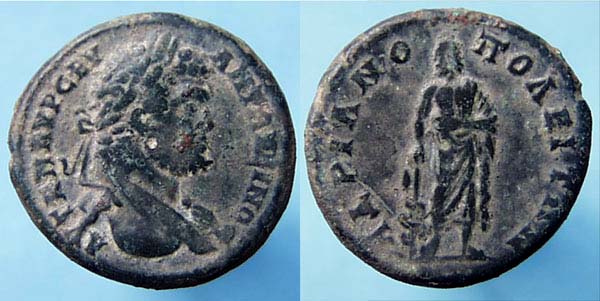

Caracalla AE28 Hadrianopolis, Asklepios, Bronze coin 28mm of Caracalla 198-217AD.Thrace,Hadrianopolis
---------------------------------------------------------------------------------------------------------------------------------------------------------
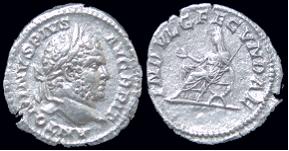
Caracalla, 198-211 CE, silver denarius, 17-19mm. Obverse: ANTONINVS
PIVS.AVG.BRIT. His bust to right.
Reverse: INDVLG.FECVNDAE.Julia Domna seated on throne to left holding
sceptor.Sear 1919
---------------------------------------------------------------------------------------------------------------------------------------------------------

Caracalla, billon tetradrachm, (12.26g) Berytus, AVT K M A [AN TW]
NINOC Laureate head right. / DHMArX EZ [VPATO] C TOD Eagle standing,wings
open, head left, holding wreath in beak, prow left between legs SGI2670,
Bell.282. Toned Choice VF.
---------------------------------------------------------------------------------------------------------------------------------------------------------
.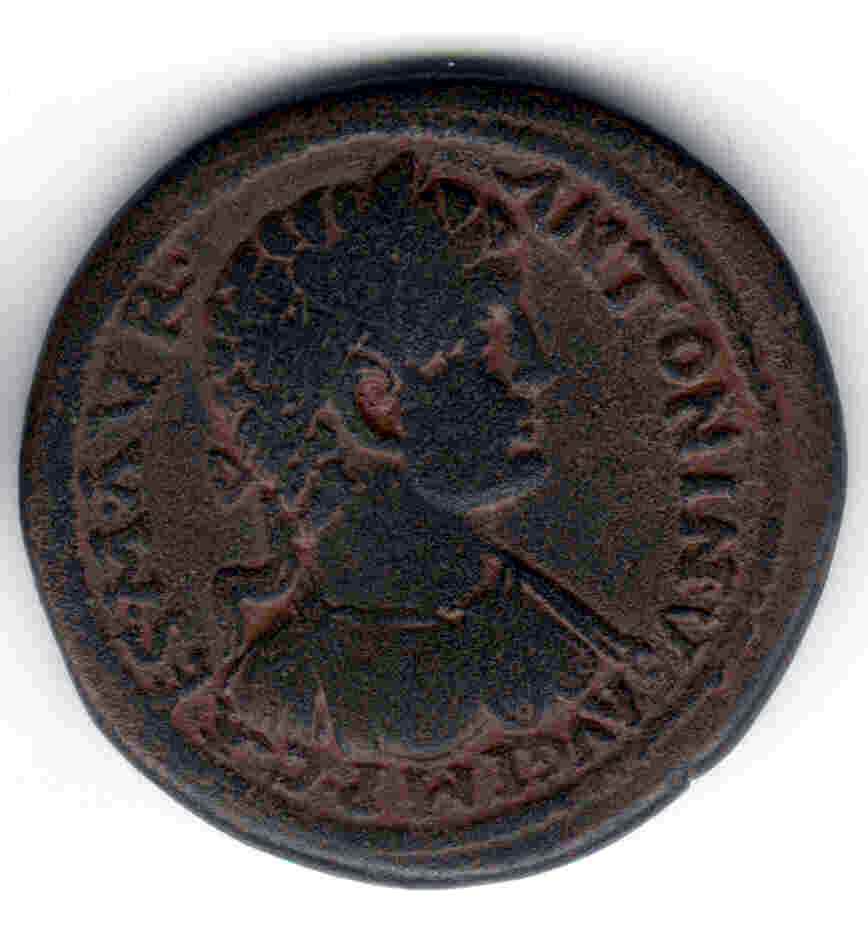
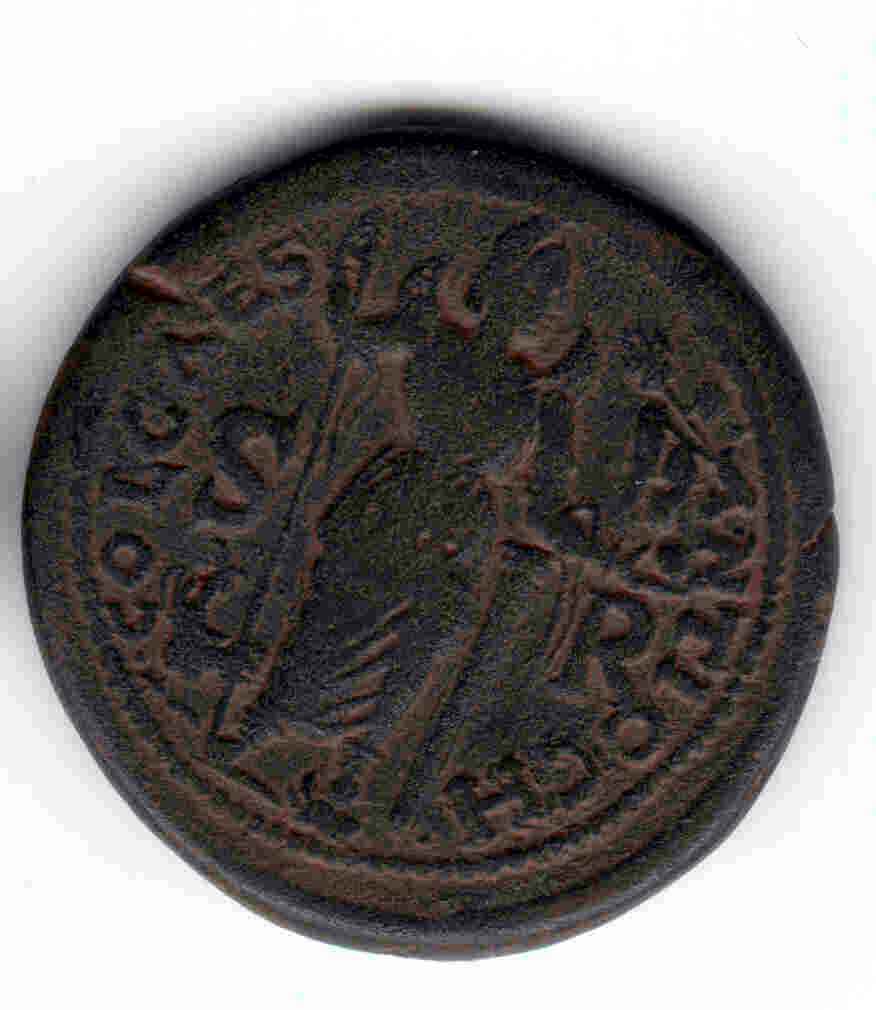
Caracalla --Pisidia, Antioch. Æ 34mm (28.52 gm). IMP CAES M AVR
ANTONINVS AVG, laureate, draped and cuirassed bust of Caracalla right /
COL CAES ANTIOCH, S R across field, Mên standing facing, head right,
holding long sceptre and Nike on globe. Krzyzanowska pl.
XXII, XXVII
---------------------------------------------------------------------------------------------------------------------------------------------------------
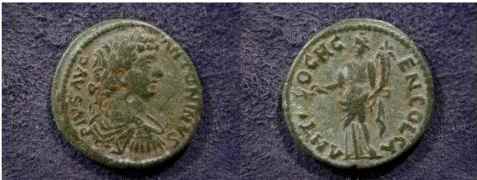
Caracalla Antiochia ae22- 4.6gr. Ob: PIVS AVG ANTONINVS Laureate head
right. Cuirass and draped.Rv: ANTIOCH CE N COL CA (Colonia Caesareia Antiocheia)
Fortuna Woman standing left. Possibly a modius on her head with a cornucopia
in her left arm, right arm extended. SNG von Aulock 4934
---------------------------------------------------------------------------------------------------------------------------------------------------------
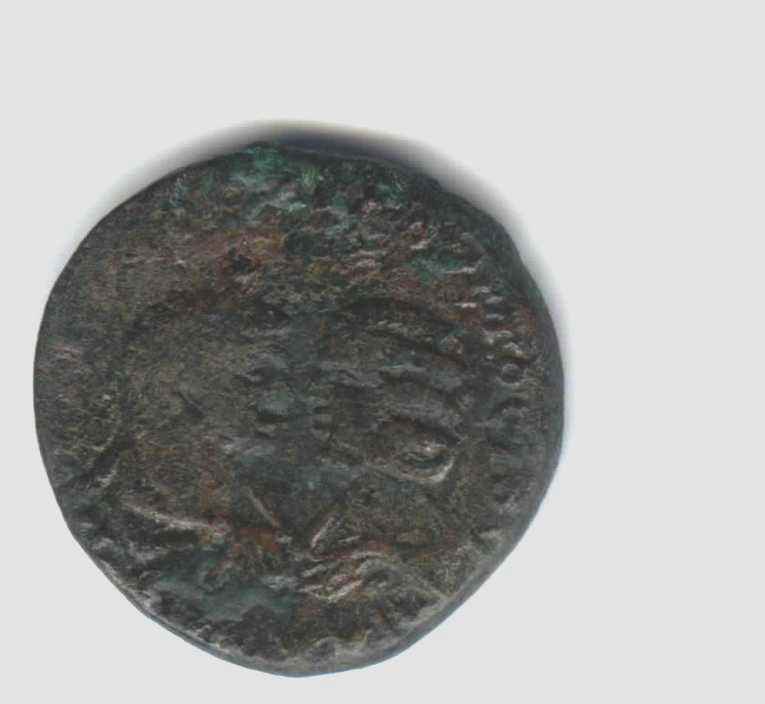
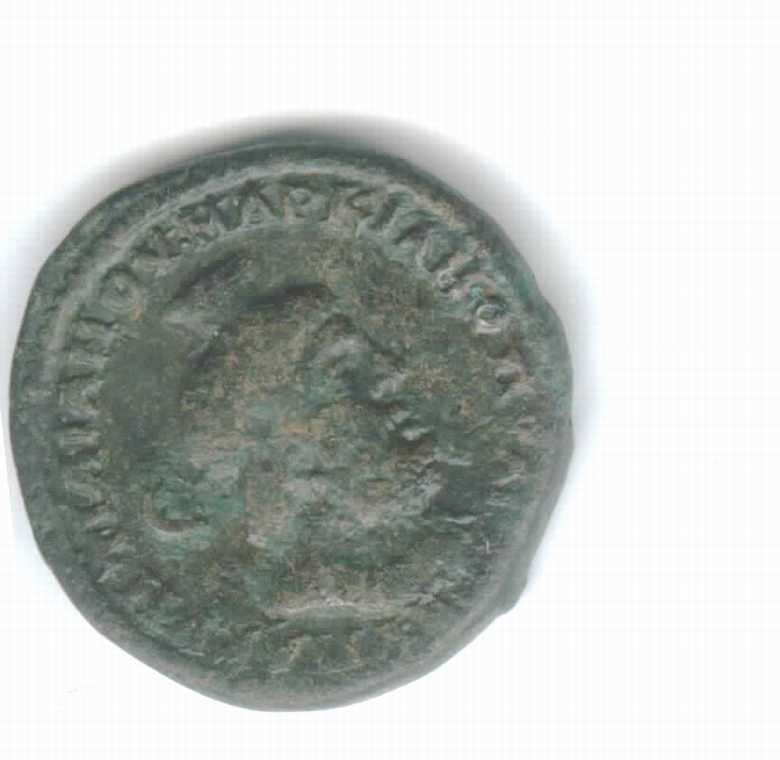
Marcianopolis is this AE28 of Caracalla and his mother Julia Domna.
The obverse legend in this case was crowded into the encircling area rather
than using the 'continued in exergue' style described above. It is interesting
that the title AVGOVCTOC (Augustus) was spelled out completely rather than
being abbreviated AVG (AVG) making the long legend a better fit. The reverse
attempted to do this same thing but space ran out with two letters left
so WN was placed in the fields one letter on each side of the bust of Serapis.
Again the legend included the name of the legate. In this case we see KVNTILIANOV
(Quintillianus).
---------------------------------------------------------------------------------------------------------------------------------------------------------
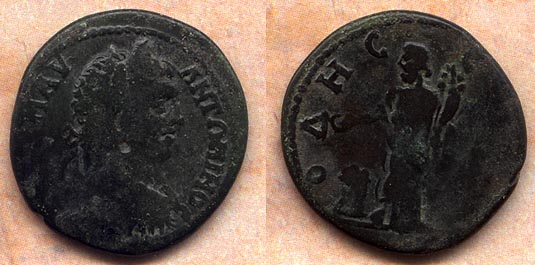
Imperial Rome, Caracalla 198 - 217 AD. AE-24. Odessos, Thrace. 8.56g. His laureate head rt. / Serapis standing lt., holding a patera over an altar and a cornucopiae.